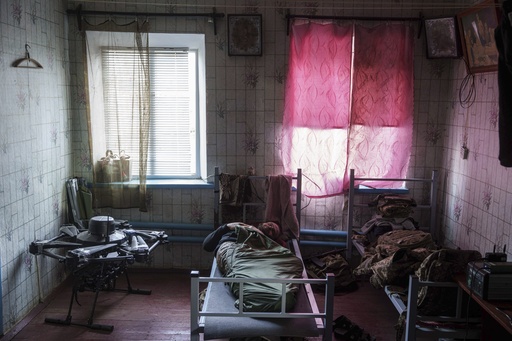POKROVSK REGION, Ukraine — Ukrainian forces are currently grappling with significant shortages of infantry troops amid persistent Russian drone assaults on vital supply routes in Pokrovsk. This area has emerged as a critical battleground in the ongoing conflict, with the situation growing increasingly urgent as Ukrainian troops experience losses.
The military situation around Pokrovsk is particularly concerning due to its strategic location at the intersection of several highways leading to major cities within the eastern Donetsk region, as well as a significant railway hub. Russian forces are intensifying their efforts to seize more territory, while complications arise from a perceived reduction in support from the United States, following the freezing of foreign aid from the Trump administration. Ukrainian officials are on high alert regarding the implications of this shift, even though military assistance remains intact as affirmed by Ukrainian President Volodymyr Zelenskyy.
Ukrainian soldiers stationed in Pokrovsk have noted a change in Russian strategy, with the enemy now focusing on flanking maneuvers rather than direct assaults, thereby establishing a pincer movement. The Russian military’s control of elevated positions poses a direct threat to Ukrainian supply lines. The recent heavy fog has hindered Ukrainian surveillance efforts, allowing Russian forces to consolidate their territorial gains effectively.
Ukrainian commanders have expressed alarm over insufficient reserves to maintain defensive operations. They report that newly deployed infantry units are struggling to conduct effective operations on the ground. Many are placing their hopes on Mykhailo Drapatyi, who was recently appointed as the chief of ground forces by President Zelenskyy, in hopes that he can alter the current trajectory of the conflict.
“The war’s outcome hinges on logistics. Without adequate logistics, infantry forces cannot be supplied,” commented Afer, the deputy commander of the Da Vinci Wolves battalion. “Russian forces have recognized this aspect and are executing their strategies proficiently.”
Recently, a combination of challenging factors has led to significant losses for Kyiv, including the recent loss of the strategic location of Velyka Novosilka — a critical setback for Ukrainian forces since their reconquest of Kurakhove earlier this year. Ukrainian commanders assert that some troops remain in the southern sector of Velyka Novosilka, leading to questions about the higher command’s decision-making regarding troop withdrawals.
The settlement lies just 15 kilometers from Dnipropetrovsk, where authorities have begun constructing fortifications in anticipation of further Russian advances. Ukrainian soldiers in Velyka Novosilka report substantial Russian troop concentrations around the area, and the recent weather conditions have severely limited Ukrainian drone surveillance capabilities, enabling Russian forces to strengthen their positions.
Russian forces executed a major offensive as their troops amassed along critical routes, deploying up to 10 columns of armored vehicles from multiple directions after capitalizing on the weather conditions.
Ukrainian logistical operations are increasingly jeopardized as key routes are compromised by Russian drone activity, exacerbating the difficulties faced by Ukrainian troops in the region. The positioning of Russian forces in advantageous terrain around Pokrovsk allows them to deploy drones that can achieve targets deep within Ukrainian lines.
The Pokrovsk-Pavlohrad-Dnipro highway is reportedly already under the threat of Russian drones, and the proximity of Russian forces, now less than just 4 kilometers away, is causing significant disruptions to Ukrainian logistics and movement. “Current road capacity has dropped to only 10% of its usual flow,” one commander lamented.
Similar issues are plaguing the Myrnohrad-Kostyantynivka highway under relentless Russian fire. Consequently, military vehicles, including critical supplies for troops and medical evacuations, must traverse open fields, which is particularly dangerous during adverse weather conditions.
A paramedic operating a first-aid station near Pokrovsk, identified as Marik, shared that the time required to evacuate wounded soldiers has ballooned from hours to days due to these logistical headaches, making rescue operations exceedingly difficult under constant enemy observation.
The recruitment of inexperienced soldiers has further contributed to Ukraine’s challenges. Frontline troops describe the situation as “catastrophic,” with a significant influx of newly minted infantry divisions lacking the requisite training and experience, which places additional burdens on veteran brigades called to stabilize the front.
Deputy commander Afer expressed frustration over new recruits who frequently abandon positions, leading to an overstretched frontline for other battalions that struggle to maintain control. “What began as a 2-kilometer zone of responsibility ends up expanded to 8-9 kilometers due to their inexperience,” he explained, emphasizing the severe resource shortages faced by his battalion.
At the first-aid station, a wounded soldier known as Fish, recuperating from a leg injury, described how he was injured while attempting to assist a comrade. “We are doing our best to push back against the enemy,” he stated, reflecting the determination present despite the challenges at hand.



